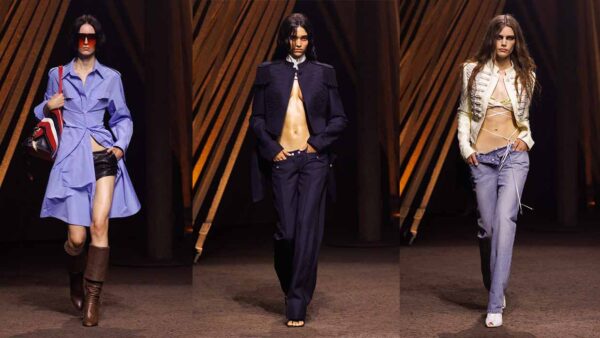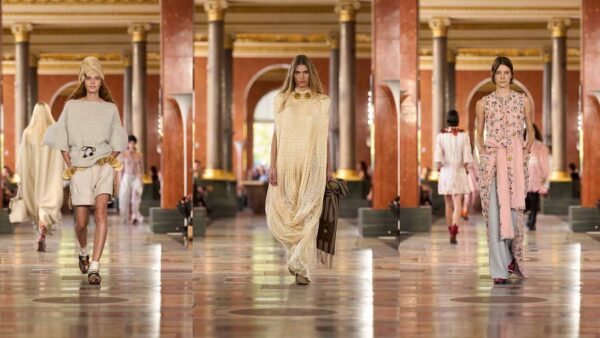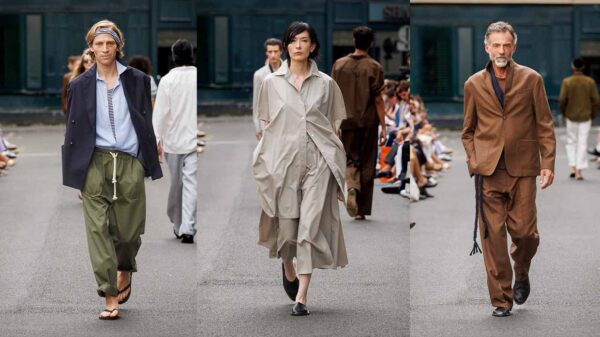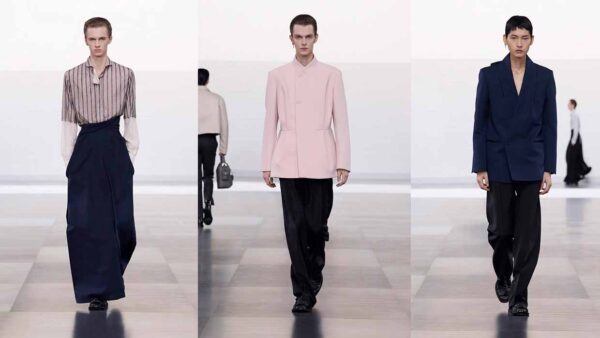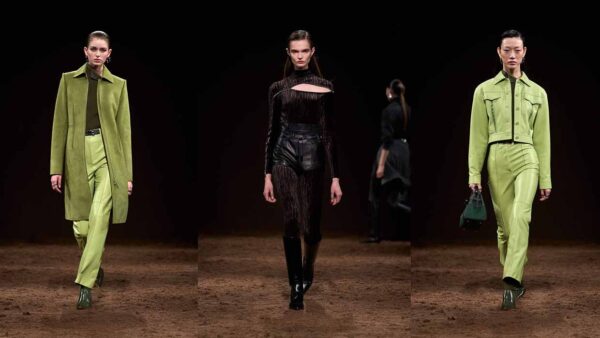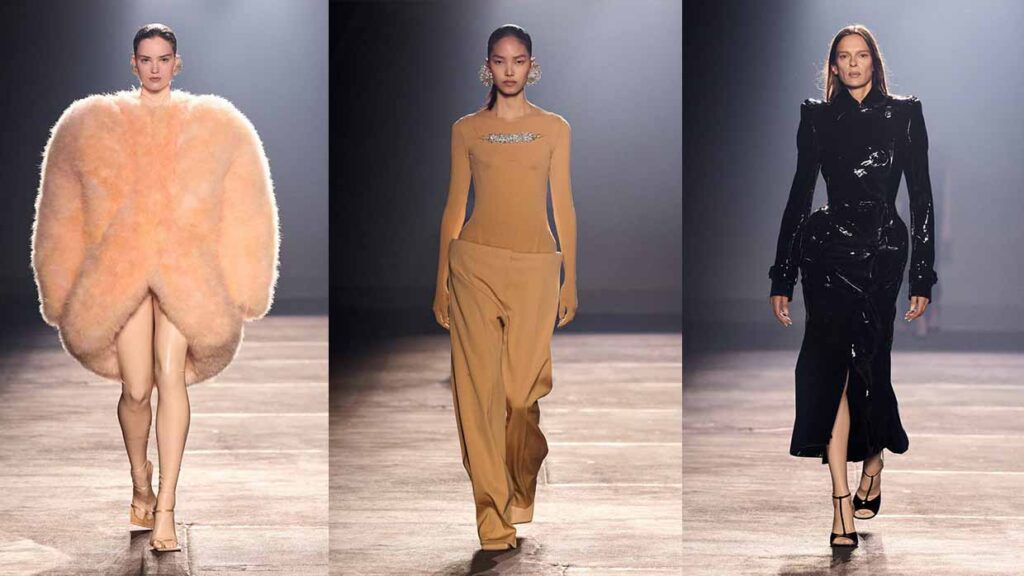
Paris, once again, fell under the spell of Mugler. With The Obscure Object of Desire: A Trilogy of Glorified Clichés, the house unveiled the first chapter – Stardust Aphrodite – transforming the darkened show space into a dreamscape of contrasts, where brutalist architecture dissolved into the soft intimacy of a boudoir. It was here, amid shadow and light, that Mugler redefined the grammar of seduction for a new era.
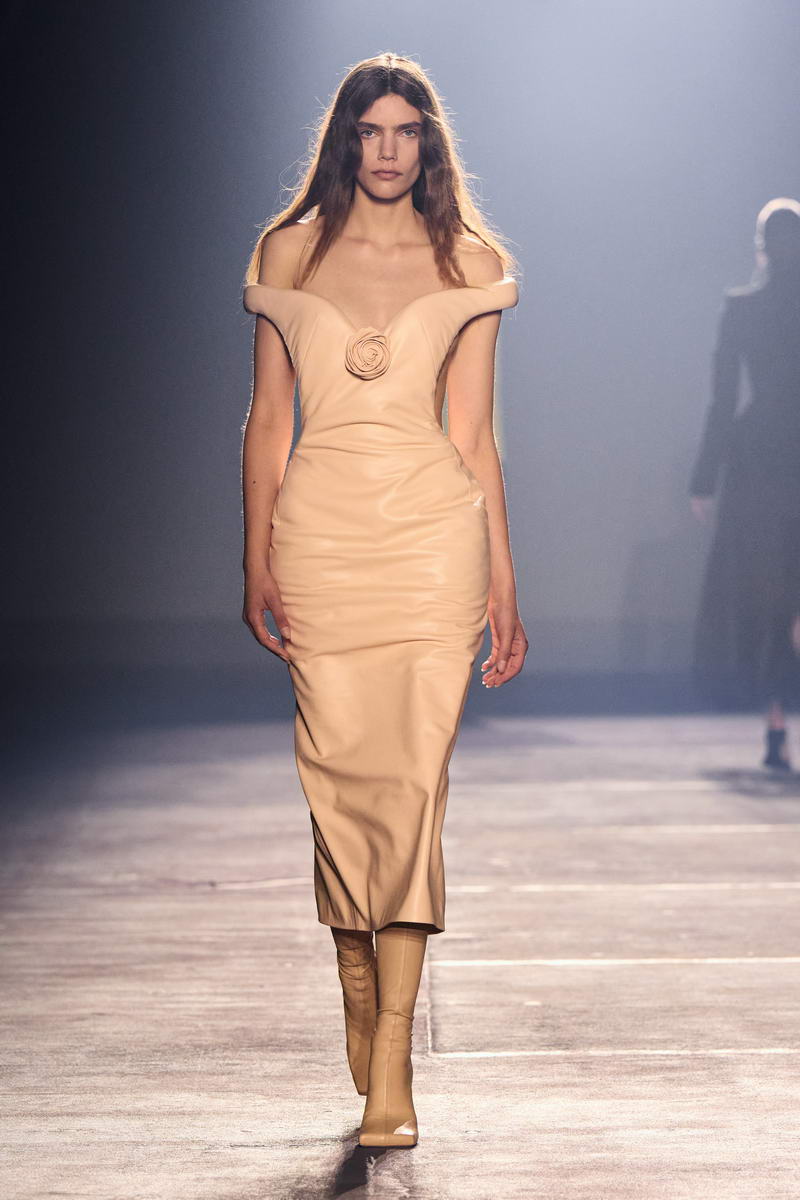
From the opening tableau, the collection felt like an invocation – a resurrection of the showgirl, that eternal emblem of spectacle and self-possession. Mugler’s Stardust Aphrodite traced her lineage through myth and cinema: from the divine Aphrodite to the fatal Salomé, from Marlene Dietrich’s androgynous Lili Marlene to Fassbinder’s Lola and the archetype of The Last Showgirl. Each muse flickered between power and vulnerability, embodying what the collection itself sought to explore – the paradoxes of desire and the shimmering dualities of the feminine mystique.
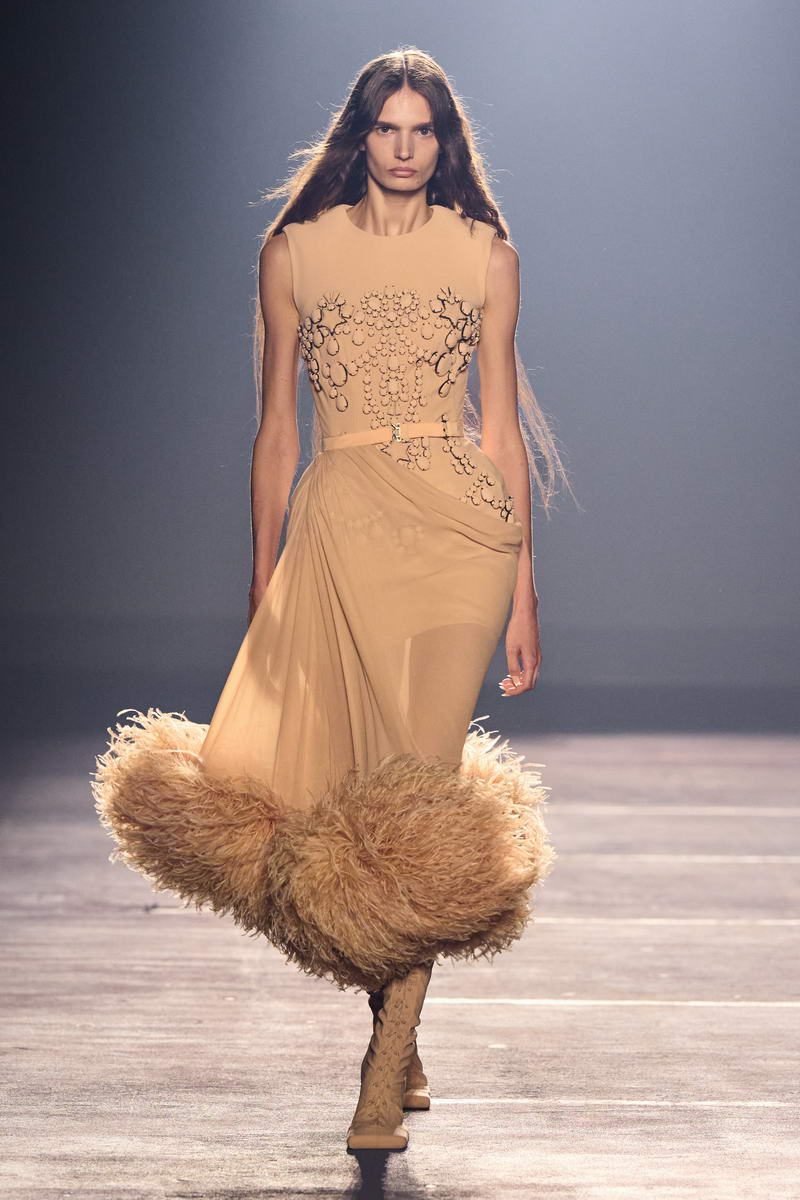
True to the house’s legacy, Mugler’s creative direction leaned into contradiction as an act of liberation. Fantasy collided with reality; ornament met austerity; nostalgia danced with futurism. The result was a hypnotic dialogue between extremes – a reconciliation of good and bad taste, darkness and light, all bound by the brand’s signature iconoclastic verve.
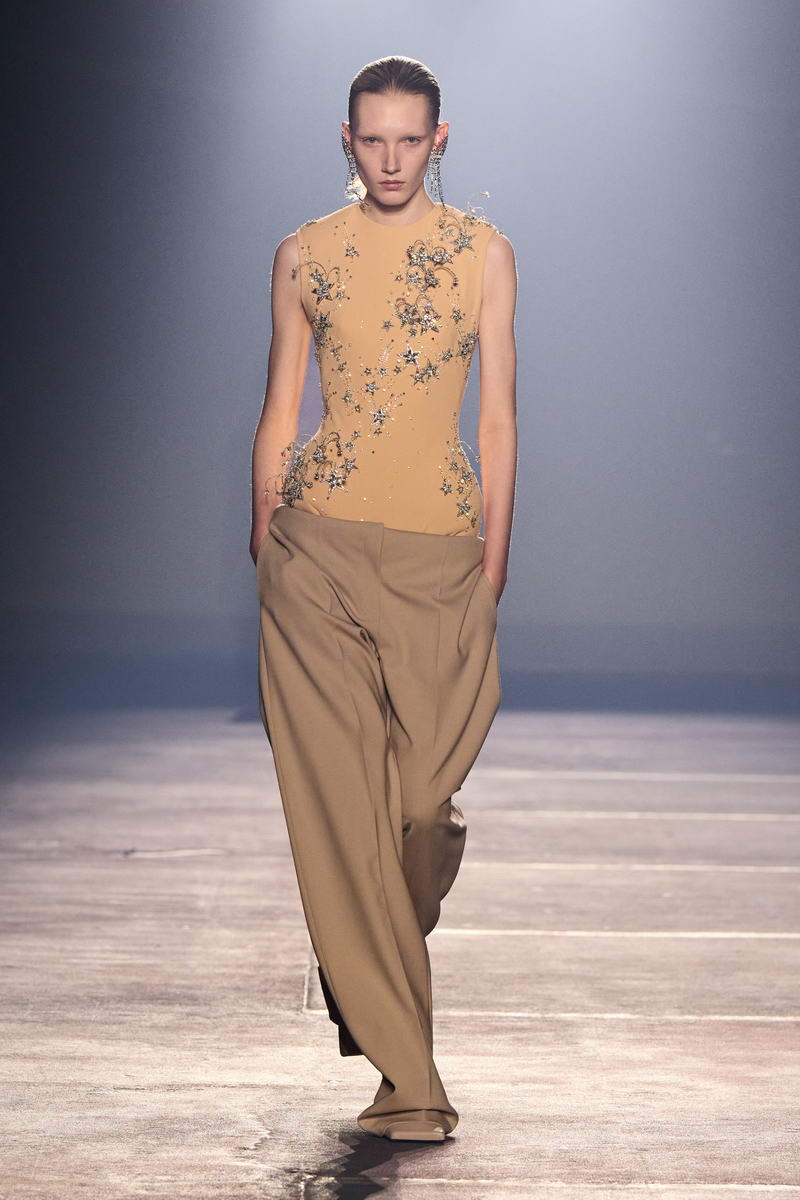
The garments themselves appeared as living contradictions. Bare skin became fabric; the body, a canvas of sensual architecture. Corseted silhouettes recalled the sculptural hourglass Mugler perfected decades ago, only to be deconstructed in fluid jersey or reassembled into fragmented, futuristic forms. Liquid pastel satins shimmered against matte, flesh-toned embroidery, while feathers and shredded fringe cascaded in performative motion – the showgirl reimagined not as fantasy object, but as an agent of her own spectacle.
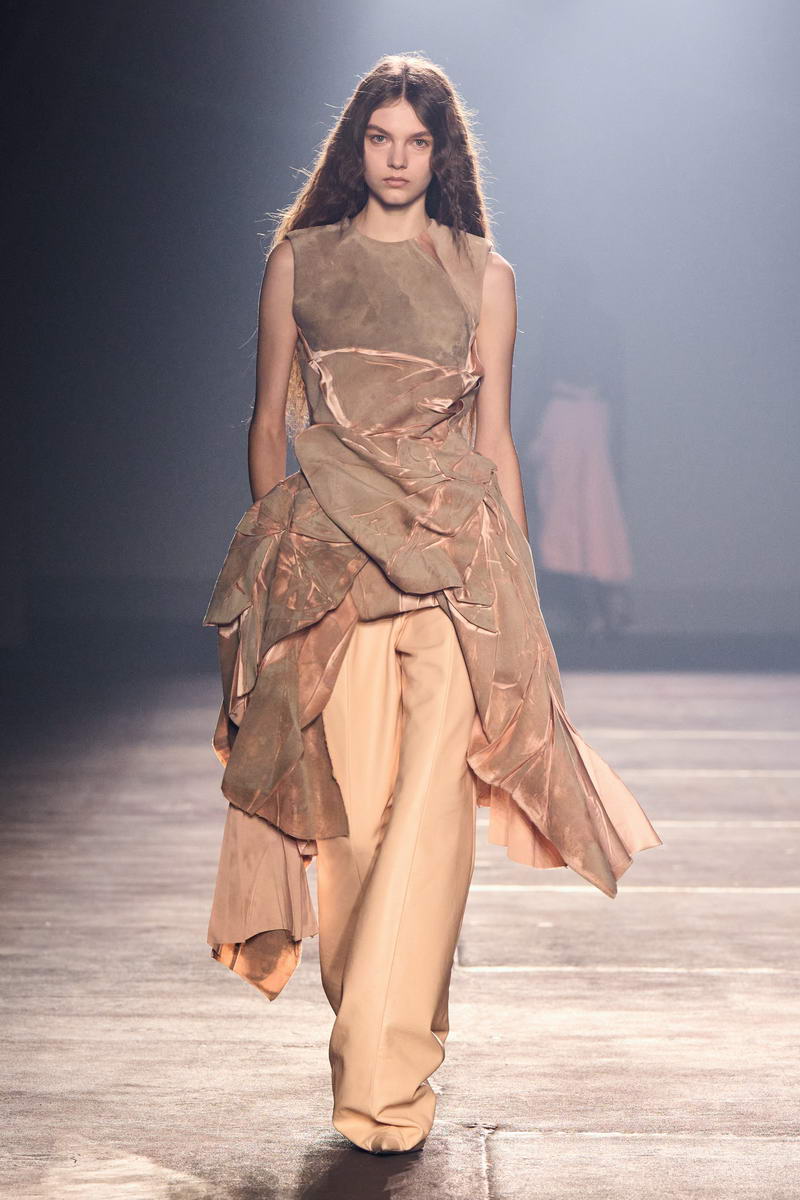
And then, the light shifted – a reminder that in Mugler’s world, glamour is not mere decoration but a provocation. Under enigmatic stage lights, the presentation pulsed like a manifesto. It proposed glamour as rebellion, as an antidote to the cultural numbness of our times. Here, seduction was neither submissive nor superficial; it was a language of self-definition.

Stardust Aphrodite is more than a collection – it is the beginning of a trilogy that promises to dissect the very nature of desire. In reclaiming the showgirl’s mythos, Mugler invites us to rediscover the beauty in contradiction, the allure in artifice, and the power in the performance of self.
In the end, Mugler did what it does best: turning clichés into constellations. The showgirl lives again – not as a relic of spectacle, but as the luminous heart of modern glamour.







